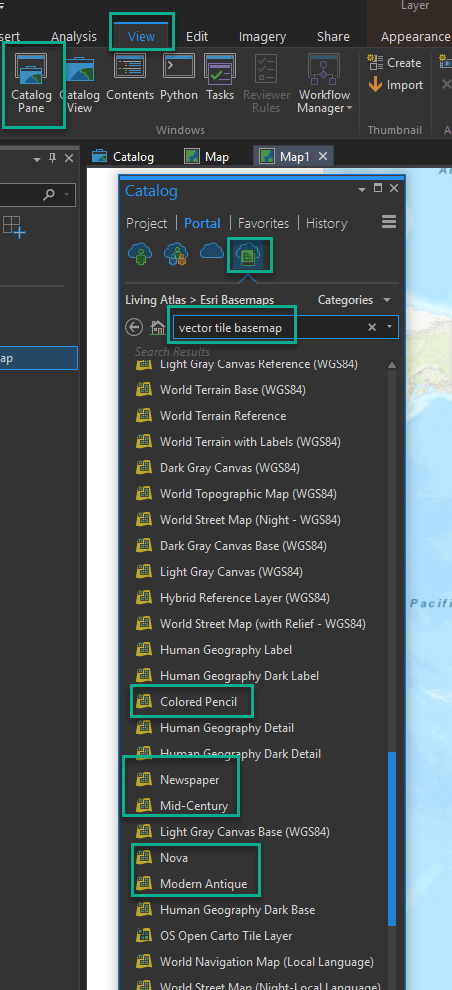- Home
- :
- All Communities
- :
- Industries
- :
- Education
- :
- Education Blog
- :
- Update on unusual, fascinating, and useful base ma...
Update on unusual, fascinating, and useful base maps in education
- Subscribe to RSS Feed
- Mark as New
- Mark as Read
- Bookmark
- Subscribe
- Printer Friendly Page
Last year I wrote guidelines on how to go beyond the standard base maps available in ArcGIS Online to access others that are now available. There's plenty to love about standard base maps - satellite imagery, OpenStreetMap, National Geographic, and others, and for the USA, the USGS topographic maps. But the ability to easily access the unusual and fascinating ones such as Colored Pencil and Antique Modern is interesting and useful in many ways, such as integrating Arts into your STEM instruction (thereby creating "STEAM"), for discussion about cartography, to lend interest to your maps, analysis, and story maps, and much more.
There are additional ways to access these maps over and above the ways I described in my previous essay. One way is to access a map that contains a set of new custom vector tile base maps, on http://esriurl.com/vectortilebasemaps. Change the base maps simply with the base maps tool. Grab the URL for the base maps that you are interested in and use it in your own maps - many are listed here: http://urbanobservatory.maps.arcgis.com/home/item.html?id=4009a9901e0c4f778b77c99f4a42ba41
The newspaper base map, showing central London, but available globally at multiple scales.
Since ArcGIS is an integrated system (web, desktop, field, enterprise), you can also access these base maps in ArcGIS Pro. To add one of these base maps to your ArcGIS Pro project, click on the View Tab > Catalog Pane, > Living Atlas > Search 'vector tile basemap', as shown below.

Adding one of these fascinating base maps to ArcGIS Pro.
Now challenge yourself and your students to go the extra mile. Now that you are using a variety of different base maps, discussing the merits of each cartographically and artistically, a logical next step is for you and them to create your own base maps. That's right! As my colleagues describe in these guidelines, you can edit everything from fill and text symbols to fonts, halos, patterns, transparency, and zoom level visibility! This is a great way for you to enhance your GIS and cartography skills but also to tap into your creative, artsy side!
For more information, read the GeoNet blogs about vector base maps. Happy mapping!
I confess, my favorite is still Colored Pencil. What's yours?
You must be a registered user to add a comment. If you've already registered, sign in. Otherwise, register and sign in.
-
Administration
67 -
Announcements
71 -
Career & Tech Ed
1 -
Curriculum-Learning Resources
235 -
Education Facilities
24 -
Events
62 -
GeoInquiries
1 -
Higher Education
570 -
Informal Education
273 -
Licensing Best Practices
76 -
National Geographic MapMaker
28 -
Pedagogy and Education Theory
210 -
Schools (K - 12)
282 -
Schools (K-12)
243 -
Spatial data
30 -
STEM
3 -
Students - Higher Education
242 -
Students - K-12 Schools
118 -
Success Stories
34 -
TeacherDesk
1 -
Tech Tips
101
- « Previous
- Next »